Orchids in a closed system: pros and cons, growing rules
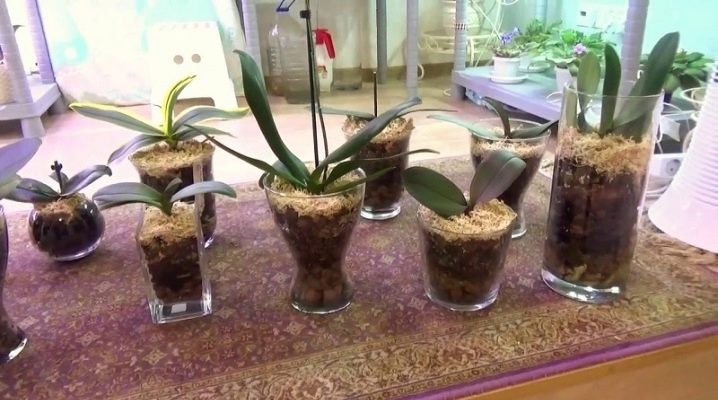
Recently, one of the most interesting and competitive ways of growing orchids is growing them in a so-called closed system, which has many advantages. At the same time, some gardeners and specialists in phalaenopsis varieties are skeptical about this method. In this article, we will take a closer look at the technique of growing orchids in a closed system, consider the nuances of caring for plants and feeding them.
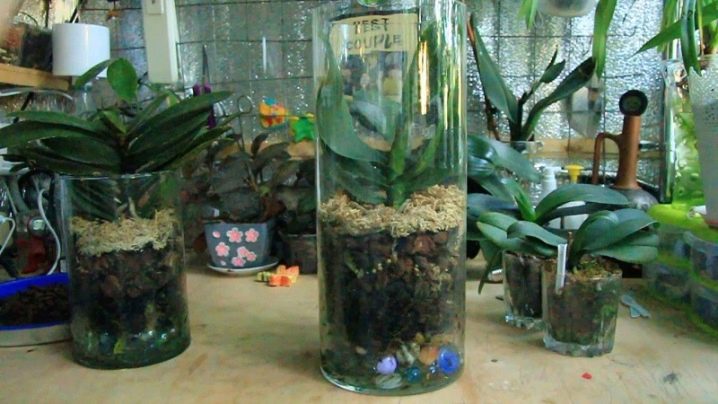
What is it like
Some hobbyists believe that a closed or semi-closed system for orchids is an ordinary transparent florarium with a special artificial microclimate. However, this is not the case. Instead of the usual container or pot, the plant is placed in a transparent container made of plastic or glass, but without a single drainage hole at the bottom to drain the water. Thus, a closed system is obtained at the plant rhizome. Despite the absence of so-called holes at the bottom at the roots, the water in them does not stagnate, and the roots do not begin to rot, the plant develops well in the future, even in an apartment. However, in order to properly plant an orchid in a closed system, it is very important to take into account a lot of nuances and follow the step-by-step instructions from specialists, which we will consider below.
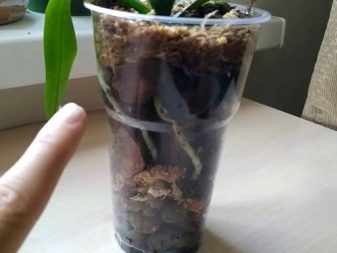
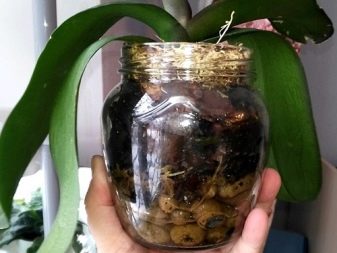
Advantages and disadvantages
Planting plants in a closed system has its pros and cons, which novice gardeners should definitely know about.
- Orchids planted in a closed system are less whimsical and require much less personal care in the future. The main care consists only in watering (2-3 times a week) and seasonal picking of leaves and dried flowers.
- Plants in a closed system are easier and faster to reanimate. So, often florists in stores sell diseased plants with already rotten roots for sale. In appearance, they, of course, bloom and seem to be green and healthy, but in fact, if they are not transplanted, they may soon die. And the transplantation of such store-bought orchids is most successful in a closed system. It is in her that orchids come to life, are filled with energy and soon become completely healthy.
- In a closed system, leaves grow faster than when planted normally. The duration of flowering of phalaenopsis also increases.
- A closed system is best suited for places with a dry climate, since with such a cultivation, orchids do not take aerial roots, since they are completely saturated with moisture from the inside.
- When using this method, the roots remain completely safe from rotting and the development of pathogenic microbes on them. A special moss must be placed in a transparent pot, which will not only filter the root system, but also disinfect it.
Sphagnum moss is considered a natural antiseptic that is widely used in horticultural practice.

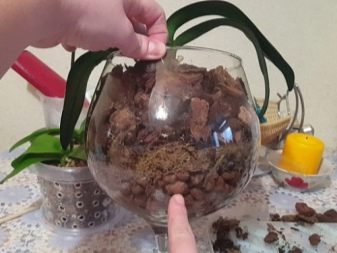
As a rule, there are very few disadvantages to such a growing system. And any problems arise only when the planting technology itself is violated and when there is a deviation from compliance with special standards in the use of fertilizing and moss. However, some hobbyists and experts say that when growing orchids in a closed system:
- they still put down aerial roots;
- water stands at the bottom of the container for a long time, which over time still leads to decay of the roots and the formation of mold;
- such a system is completely unsuitable for very humid climates.
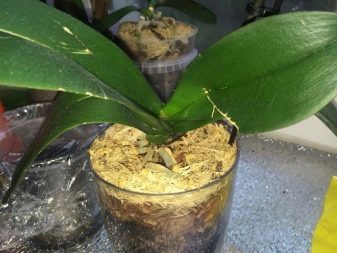

Landing subtleties
For the successful planting of an orchid and its further residence, it is very important to study all the intricacies of planting, especially if it will be carried out for the first time.
It is better to use a plastic or glass container as a container for planting, which can be purchased at any flower shop. There should be no holes in it at the bottom. Of course, it is better to purchase glass, since it is not porous, and this prevents ingrowth of the root system. It is also undesirable to choose a round container, preferably an oblong one, since in the case of repeated transplantation from a round container, the rhizome cannot be damaged, which in any case will affect the health of the plant.
The choice in favor of a transparent container is also due to the fact that it is easier to control the water level in it and monitor irrigation.
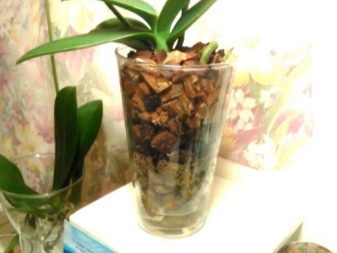
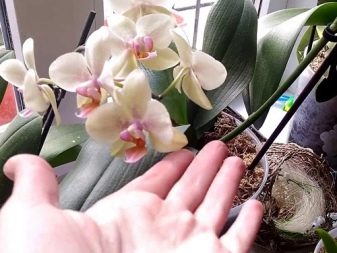
Speaking about the substrate, it is important to mention that it should not consist of one component, but several at once. All components must be stacked on top of each other. In no case should you mix them all. As a substrate, professionals usually use:
- expanded clay;
- sphagnum moss;
- special bark or ready-made substrate for orchids;
- charcoal.
As you can see from the list, each layer is very important as it has antibacterial and antimycotic properties. By creating several layers, you can get a natural filter that will take care of the condition of the plant in the future. It is best to purchase substrate components at a florist, but if there is an opportunity to collect some components in the forest, then they will also work. When choosing a forest substrate, it does not need to be cleaned, boiled or washed out with antiseptics.
It is poured into the planting container in the form in which it was assembled.
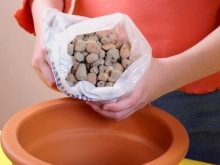

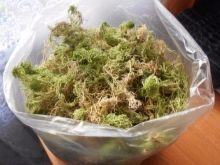
Step-by-step landing
Before planting an orchid you should prepare everything you need:
- transparent container;
- all components of the substrate;
- disposable gloves;
- water for irrigation (room temperature).
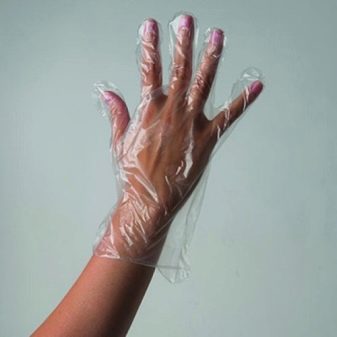
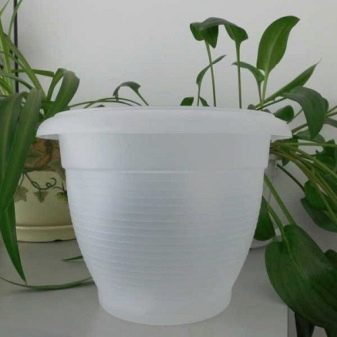
Step-by-step instructions for planting phalaenopsis in a closed system.
- Lay out the substrate in layers at the bottom of the transparent container. Gloves are advisable for personal hygiene.
- First you need to lay out the drainage, no more than four centimeters, optimally three.
- Then moss is laid out, half as much as drainage. That is, approximately 1.5-2 cm based on the first layer.
- Next is a layer of a special substrate for orchids. If it is ready-made, from a pack, then, as a rule, coal may already be present in it, and if not, then it must be intervened independently.
- After laying the layers, you must carefully take the orchid from the old pot, without damaging the roots, and move it to a new container. The neck of the plant should not go deep into the container, it should be on the surface. If you break this rule, the plant will simply start to rot.
- Further, the container with the orchid must be filled to the top with the bark. The orchid should "sit" in it as tightly and firmly as possible. Put a thin layer of moss on top again. In this case, it is used as a mulch for the external protection of the plant.
- After planting, the orchid should be completely filled with water. Not cold, but slightly warm, preferably filtered; after half an hour, it must be carefully drained by tilting the flower.
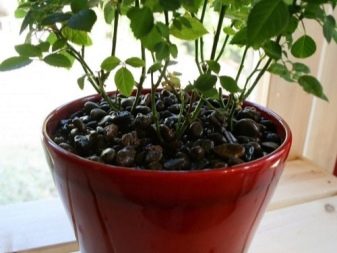
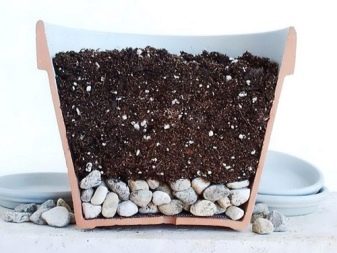
The landing is ready. Then the plant must be placed in the optimal place for its germination. Not too hot or too cold. Add water 2-3 times a week. With severe dryness, watering can be increased.
When planting, it is very important to take into account one point: the roots should not reach the expanded clay and water.
This method of planting is considered the most profitable if all the basic rules of technology are observed. The closed system is neither too wet nor too dry, which allows the orchid to grow as in its native place in the tropics.
A pruner may be needed if rotten roots have been removed from the plant, in which case it will be more difficult for it to take root.
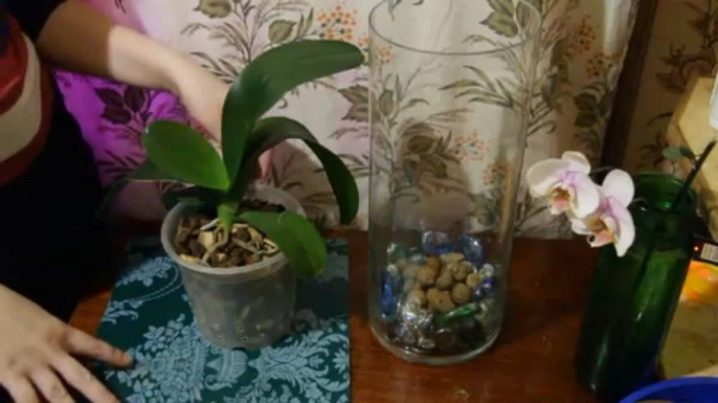
A little about adaptation and care
Transplanting the plant into a new container is best when it is in the growing phase. It is she who is considered the most favorable for further adaptation. At the same time, experts recommend using part of the old substrate, laying it in a new one, for even better engraftment. Immediately after transplanting, the plant does not need to be fed; a certain amount of time must pass for this.
Do not be afraid that during the adaptation period the orchid can shed its leaves and even flowers. This is a completely normal reaction.
As for the further care of the orchid, it will include only two points: regular watering and feeding. An additional shower for the plant, as well as its humidification with a spray bottle in a closed system, are considered superfluous, such methods of care are not useful.
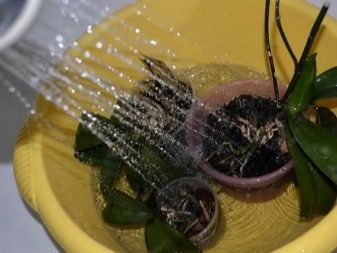
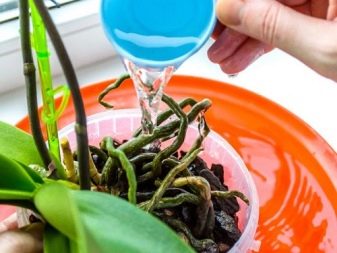
- Water for watering must be used at room temperature. Watering should be carried out in a thin stream until a layer of expanded clay is covered. It is this level that should be adhered to in the future. For convenience, you can make a mark on the container with a marker.
- The first feeding can be carried out only after the plant has completely taken root. It is possible to make top dressing, depending on the variety, through each watering, but you should not abuse them if the plant grows well.
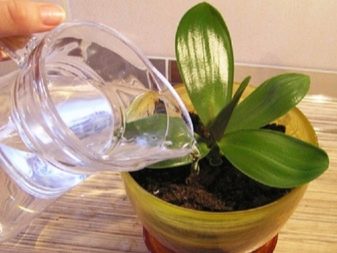
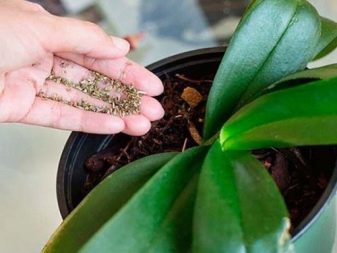
Possible difficulties
Subject to all the recommendations for planting, there should not be any difficulties, however, the main ones are still the following.
- Using too large a container in which the orchid dangles or dries out, and its roots touch the water excessively.
- Mold growth. At the beginning of adaptation, you should not be afraid of it. After the plant takes root in 90% of cases, it disappears by itself, without carrying any threat.
- Using an overly shallow substrate often leads to root rot. Therefore, it is best to use the larger one.
- Insects. Unfortunately, it is they who very often attack orchids if the climate is humid. You can get rid of them either with home remedies, for example, pouring garlic water on the plant, or with special insecticides.
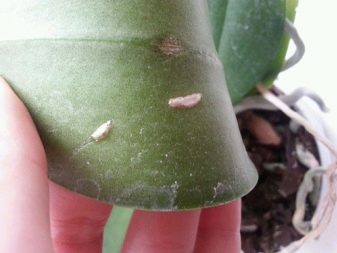
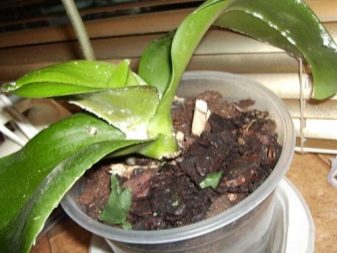
For the features of watering orchids in a closed system during the cold period, see the video below.































The comment was sent successfully.